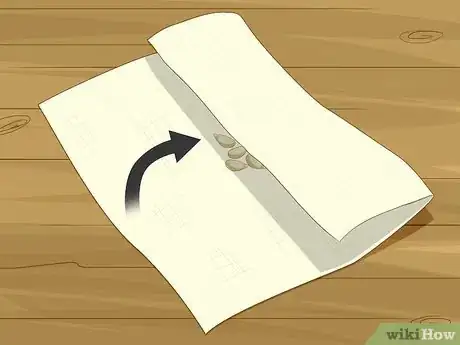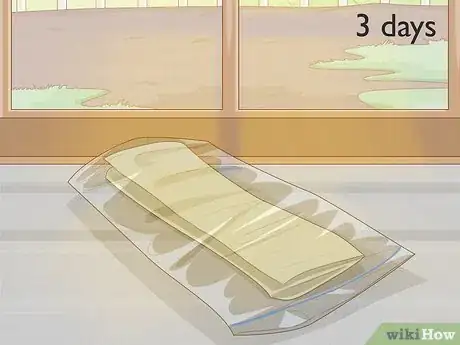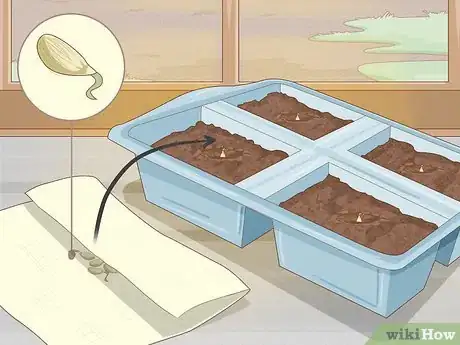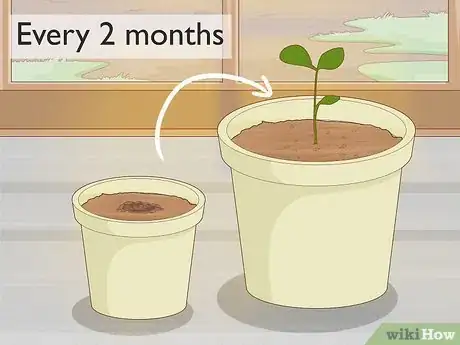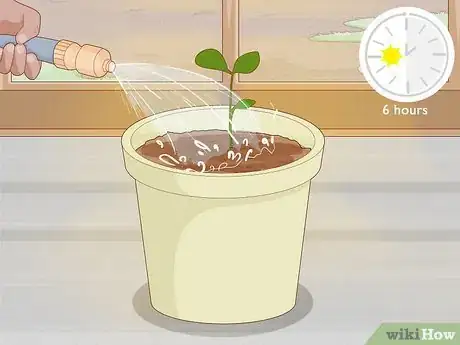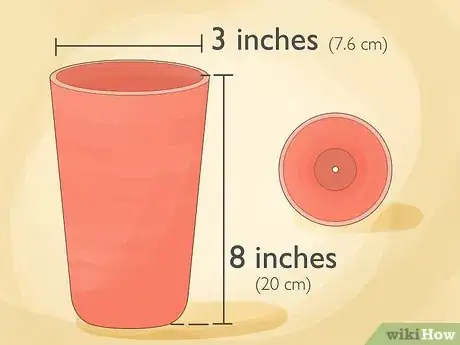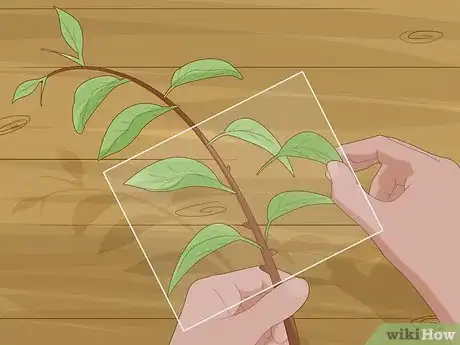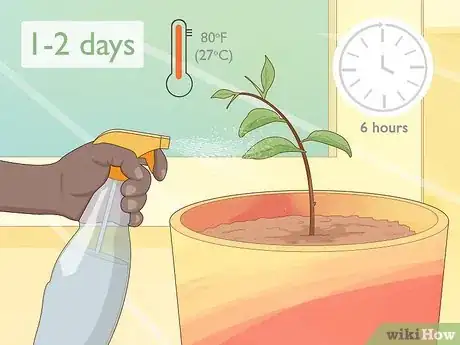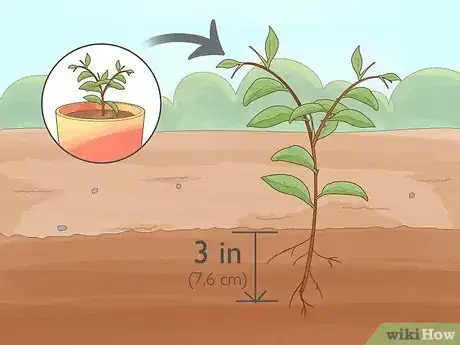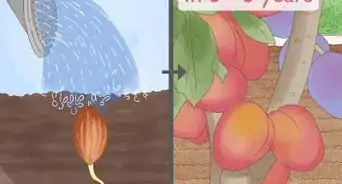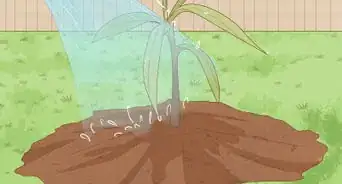This article was co-authored by wikiHow Staff. Our trained team of editors and researchers validate articles for accuracy and comprehensiveness. wikiHow's Content Management Team carefully monitors the work from our editorial staff to ensure that each article is backed by trusted research and meets our high quality standards.
There are 7 references cited in this article, which can be found at the bottom of the page.
This article has been viewed 96,382 times.
Learn more...
Calamansi trees are part of the citrus family and bear a small, sour fruit. The calamansi fruit is used in Philippine cuisine and tastes something like lime. Some people also grow calamansi trees for decoration. The hardest part of growing calamansi trees is maintaining the correct environment, especially if you don't live in a tropical location. As long as you keep the plants warm, humid, and exposed to light, they should grow into healthy trees.
Steps
Cultivating Calamansi from a Seed
-
1Get calamansi seeds from calamansi fruit or online. If you live in a place where you have access to calamansi fruit, you can buy some fruit and save the seeds. Remove the outer, pulpy layer of the seeds. Each fruit has around 5 seeds. If you don't have access to calamansi fruit, try looking for seeds online.
- To remove the calamansi seeds without cutting through them, cut through the top 1/3 of the fruit rather than the center.
- Use the seeds right away after removing the outer layer. They still need to be moist to grow.
- If you bought the seeds rather than removed them from a plant, they probably have the outer layer removed already.
-
2Place the seeds in a damp paper towel. Dampen a paper towel with a few drops of water. Place the seeds in the center of the towel and fold it so that the seeds are enveloped inside.[1]
- Alternatively, you can place the seeds directly into damp potting soil, just deep enough to be completely covered by the soil.
Advertisement -
3Leave the seeds in a resealable plastic bag somewhere warm for 3 days. Place the seeds wrapped in paper towel into a resealable plastic bag. Close the bag, but leave some air inside. Place the bag somewhere warm, such as a windowsill that gets a lot of sunlight or on top of a refrigerator.[2]
- If you put the seeds directly into the soil, cover the pot with plastic wrap to create a warm, humid environment.
-
4Transplant any sprouted seeds into a small pot filled with soil. Check the seeds after 3 days. Any seeds that have sprouted can be moved to a small pot to continue growing. Fill the pot with potting soil and plant the sprouted seeds just underneath the surface. Water the soil so that the top 1 inch (2.5 cm) is damp.[3]
- For seeds planted in a pot, remove the plastic wrap once the seeds have sprouted.
- You may need to wait an extra day or two for the seeds to sprout.
-
5Move seedlings to individual pots once they have 2 large leaves. After around 6 weeks, the seedlings will grow to be several inches tall and start to sprout leaves. As soon as a seedling has 2 fully-grown leaves, you can move it into its own pot. Gently remove it from the soil so that you don't break the roots.[4]
- Always water seedlings thoroughly, so that the potting soil is damp all the way through, when you transplant them to a new pot. Young plants need more water to grow than mature plants.
-
6Transplant your calamansi every 2 months to give it more room to grow. To transplant a calamansi plant, gently slide the soil and seedling out of one pot and carefully break apart the roots to separate them. Place the seedling in a larger pot and fill it in with well-draining soil. Water the seedling so that the soil is damp all the way through.[5]
- The seedling should be planted around 2 inches (5.1 cm) deep in the soil.
-
7Water the plant regularly and leave it in full sun. Calamansi plants need to be watered whenever the top layer of soil dries completely out, which could be daily or several times a week, depending on humidity levels. Calamansi also requires full sun for healthy growth, meaning it needs to be exposed to sunlight for 6-10 hours a day.[6]
- Use soil that drains well for calamansi, as this plant doesn't like having damp roots.
- If you can't expose your calamansi plant to full sun, you can use grow lights indoors.
-
8Plant the seedling outside once grown, if you live in a tropical location. If you live in USDA hardiness zone 9b or higher, you can plant your calamansi outside. Find your USDA hardiness zone by visiting https://planthardiness.ars.usda.gov/PHZMWeb/ and entering your zip code. If you live in a zone with a number lower than 9b, it's better to grow calamansi inside, or in a container that you can move inside for winter.[7]
- In the US, acceptable regions to grow calamansi outside include parts of California, Texas, Florida, and Hawaii.
Propagating Calamansi from a Cutting
-
1Fill a tall narrow pot that has drainage holes with moisture-retaining soil. The ideal pot will be around 8 inches (20 cm) tall and 3 inches (7.6 cm) wide and should have drainage holes in the bottom. Fill the pot with soil that retains a lot of moisture.[8]
- If you can find it, coconut coir makes an ideal rooting soil.
-
2Use a sharp knife to cut a 8 to 10 inches (20 to 25 cm) branch. Use a scalpel or sharp scissors to snip a branch that has 2-3 nodes, does not have fruit, isn't flowering, and looks healthy. Cut on a diagonal.
- The best time to take a cutting is in spring or early summer.
-
3Remove any leaves from the bottom of the branch. Leave some leaves at the top of the branch. Pinch leaves near the bottom of the branch to remove them. You need at least 3 inches (7.6 cm) of the branch to be bare near the bottom.
- The bottom of the branch is the side where you made the cut.
-
4Place the cutting 2 to 3 inches (5.1 to 7.6 cm) deep in the pot. Stick the cut end of the branch firmly into the soil and pat the soil down around it to keep it in place. A calamansi cutting will need at least 8 weeks to root, so be sure that it will stay in place.
- You can also add some fertilizer rich in nitrogen or liquid rooting hormones at this point. Rooting hormones are available at gardening stores and help stimulate root growth in plant cuttings.
-
5Keep the cutting in a light, warm, humid environment. Since calamansi naturally grows in tropical environments, keep it in a place with a temperature around 80 °F (27 °C) or even warmer. Make sure the cutting gets at least 6 hours of full sun every day. Calamansi also needs high humidity to have healthy growth.[9]
- Try misting the cutting every 1-2 days and covering it with a plastic container to maintain a humid environment.
-
6Water the cutting daily and watch for new leaves. Water the cutting whenever the top layer of soil dries out. Usually, this is daily, but it could be several times a week. New leaves mean that the plant has rooted and you can move it into a bigger pot.
- Whenever you move a calamansi plant to a new pot, make sure to water it well.
-
7Move your seedlings outside when they produce their own leaves. Once your cuttings have been growing for around 6 weeks, they should have started growing their own leaves, meaning they are strong enough to move outside. Plant your calamansi in a 3 by 3 inches (7.6 by 7.6 cm) deep hole in sandy soil, in a location that receives full sun. Move the cutting carefully so that you don't damage the roots. Water the cutting after you move it.
- Only move your calamansi outside if you live in a tropical location.
- If you are in an area that doesn't get a lot of rain, water your newly transplanted cutting every time the soil dries out completely until it is fully grown.
- Don't add fertilizer right away. Wait 3-4 months, and fertilize 4 times a year.
References
- ↑ https://youtu.be/rZBwYnSy0yQ?t=79
- ↑ https://youtu.be/rZBwYnSy0yQ?t=117
- ↑ https://youtu.be/rZBwYnSy0yQ?t=161
- ↑ https://dahr-castro.com/green-thumb/grow-calamansi-indoors-philippine-lime/
- ↑ https://youtu.be/h16z9PEIn5M?t=44
- ↑ https://balconygardenweb.com/how-to-grow-calamansi/
- ↑ https://balconygardenweb.com/how-to-grow-calamansi/
- ↑ http://www.fruitmentor.com/growing-citrus-cuttings
- ↑ http://www.fruitmentor.com/growing-citrus-cuttings

